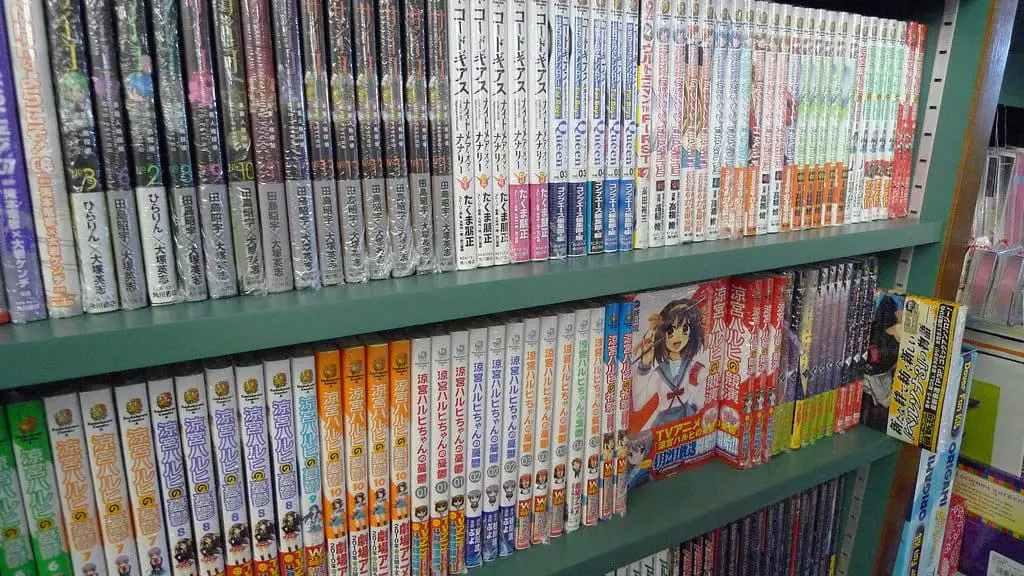Manga, the captivating and visually stunning Japanese art form, has taken the world by storm.
With its unique storytelling style and artistic expression, manga has become one of the most popular forms of entertainment across the globe. In this comprehensive guide, we will delve into the world of manga, exploring its origins, genres, demographics, and even how to become a manga artist. So, whether you’re a fan of manga or simply intrigued by its allure, this article has something for everyone.
Table of Contents
Chapter 1: The Origins of Manga
The Origins of Manga
Manga has a rich history that dates back centuries. The earliest evidence of manga can be found in scrolls from the 12th and 13th centuries, depicting animals with human-like behaviors. However, the concept of manga as we know it today began to take shape during the Edo period (1603-1867) with the release of Toba Ehon, books of drawings that showcased the artistic talents of the time.

The term “manga” gained popularity in the late 18th century with the publication of works like Santō Kyōden’s picture book Shiji no yukikai. It wasn’t until the late 19th century that manga truly flourished with the works of Rakuten Kitazawa, who is often considered the first professional manga artist.
Manga’s Evolution
Over the years, manga has evolved and adapted to reflect changes in Japanese society and culture. After World War II, Japan opened itself up to American influence, resulting in the incorporation of Western themes into manga. Artists like Tezuka Osamu introduced science fiction elements into their works, blending traditional manga elements with new and exciting ideas. This period also saw the emergence of iconic manga series like Astro Boy, which captured the imaginations of readers both in Japan and abroad. Today, manga continues to evolve, incorporating diverse themes and genres to cater to a global audience.
Chapter 2: Understanding Manga
What is Manga?
Manga is a form of comic books and graphic novels that originated in Japan. The word “manga” is derived from two Japanese words: “man,” meaning whimsical or impromptu, and “ga,” meaning pictures or images. Unlike Western comic books, manga is typically printed in black and white, allowing readers to focus on the intricate details of the artwork. Manga stories are usually serialized in magazines and later compiled into tankōbon volumes, which are paperback books that can be found in bookstores or manga stores.
Manga Genres
Manga covers a wide range of genres, catering to diverse interests and preferences. From action and adventure to romance, fantasy, and horror, there is a manga genre for everyone. Some popular genres include:
- Shonen: Aimed at boys aged 10-18, shonen manga focuses on adventure, friendship, and battles. Series like Dragon Ball, Naruto, and One Piece fall into this category.
- Shoujo: Geared towards teen girls, shoujo manga explores themes of romance, emotions, and coming-of-age. Sailor Moon, Cardcaptor Sakura, and Fruits Basket are well-known shoujo manga series.
Seinen: Targeting young men and adult readers, seinen manga delves into mature themes and complex storylines. Berserk, Vagabond, and Monster are examples of seinen manga.
- Josei: Similar to seinen, josei manga is aimed at young women and adult readers, focusing on realistic and introspective stories. Nana, Paradise Kiss, and Honey and Clover fall into this genre.
Chapter 3: Demographics of Manga
Shonen Manga
Shonen manga, designed for boys aged 10-18, features action-packed adventures, battles, and themes of friendship. The covers of shonen manga often showcase dynamic action poses, capturing the essence of the genre. Popular shonen manga series include Dragon Ball, Naruto, and One Piece.
Shoujo Manga
Shoujo manga is aimed at teen girls, typically aged 10-18. These manga series delve into romance, emotions, and coming-of-age themes. The covers of shoujo manga often feature pretty pinks, flowers, and other adorable images that reflect the genre’s focus on drama and emotion. Sailor Moon, Cardcaptor Sakura, and Fruits Basket are beloved shoujo manga series.
Kodomomuke Manga
Kodomomuke manga is specifically targeted at children, usually aged 4-10. These manga series offer light-hearted stories that emphasize moral lessons, friendship, and adventure. The art style of kodomomuke manga is bright and colorful, featuring cute characters and comic illustrations. Doraemon, Pokemon, and Crayon Shin-chan are well-known kodomomuke manga series.
Chapter 4: Manga’s Global Impact
Manga Around the World
Manga’s popularity extends far beyond Japan’s borders. In countries like France and Germany, manga holds a significant market share in the comic book industry. In fact, around 40% of the French comic book market consists of Japanese manga, while 70% of comics sold in Germany are manga titles. Manga has also gained a strong following in the United States, with publishers like Viz Media bringing popular manga series to American audiences.
Digital Platforms and Manga
The rise of digital platforms, such as Amazon Kindle and Comixology, has made manga more accessible to readers worldwide. Digital manga allows fans to enjoy their favorite series on various devices, anytime and anywhere. This digital revolution has contributed to the global growth of manga and has opened up new opportunities for both readers and aspiring manga artists.
Chapter 5: Becoming a Manga Artist
The Path to Becoming a Mangaka
Becoming a manga artist, or mangaka, requires dedication, creativity, and a deep understanding of the art form. If you aspire to create your own manga, here are some steps to guide you on your journey:
Hone your artistic skills: Practice drawing regularly and study different manga styles to develop your own unique artistic voice.
- Understand storytelling: Learn the principles of storytelling, such as plot development, character arcs, and pacing. A compelling story is the backbone of any successful manga.
- Create characters: Develop memorable and relatable characters that resonate with readers. Pay attention to their appearance, personality, and backstory.
- Study manga techniques: Explore various manga techniques, such as panel layout, perspective, and shading. Experiment with different styles to find your own visual language.
- Networking and feedback: Connect with other aspiring artists, join manga communities, and seek feedback on your work. Building a network can provide valuable insights and opportunities for growth.
- Create a portfolio: Compile your best manga artwork into a portfolio that showcases your skills and storytelling abilities. This will be essential when approaching publishers or seeking freelance opportunities.
Remember, becoming a successful mangaka takes time and persistence. Embrace the learning process, seek feedback, and never stop improving your craft.
Conclusion
Manga, with its captivating visuals and immersive storytelling, has become a global phenomenon. From its humble origins to its widespread popularity today, manga continues to capture the hearts and imaginations of readers around the world. Whether you’re a fan of action-packed shonen manga or enjoy the romantic narratives of shoujo manga, there is a genre and story waiting to be explored. And for those with artistic aspirations, the path to becoming a manga artist is filled with endless possibilities. So, immerse yourself in the world of manga and let your imagination soar. Embrace the art form that has touched the lives of millions and become a part of manga’s enduring legacy.
